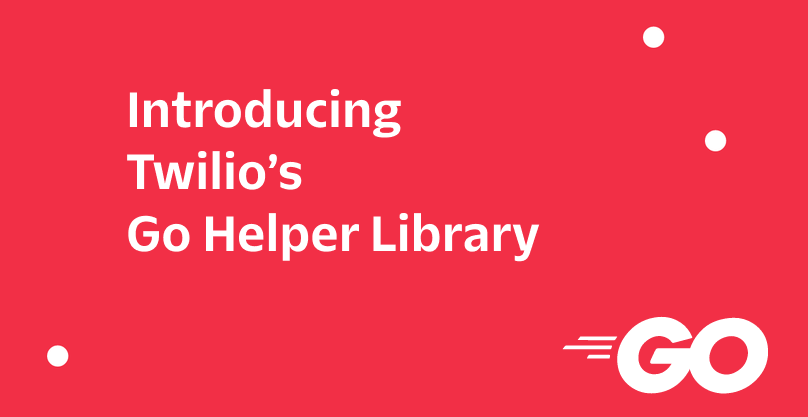Introducing Twilio's Go Helper Library
Time to read:

Whether you are building your first product with Twilio or looking to expand your product offering, you need access to tools in the programming languages or environments you use. Today, we are excited to announce that we have released a Go Helper for every Twilio API built using OpenAPI.
For a long time we’ve supported and maintained helper libraries and tooling in the most popular languages and environments used by developers. We’re now expanding that coverage by providing a Twilio Helper for Go.
To get started, check out our getting started guide.
Why use the Twilio Go Helper?
The Go library offers new functionality and takes advantage of modern language features. We’ve built it from the ground up based on developer feedback we received from you.
Here are a few reasons why we believe using an official Twilio Helper makes it safer and more efficient to build with Twilio.
- Automatic serialization/deserialization – all the error, return, and request types are included in the SDK, so you don’t have to convert raw string/byte content into objects.
- Authentication Logic – we provide logic to make it straightforward to authenticate with Twilio’s API.
- Twilio API Endpoints – you can leverage all of Twilio APIs through the helper and extend your integration as you grow or build new features.
- Request Validation – helps to ensure that incoming requests are actually coming from Twilio and not unknown actors.
- Pagination Support – automatically handle pagination across collections, such as messages and calls.
Use cases
To get started with Go we have selected some quick examples to get you started with Go.
For more examples, please check out our documentation.
Why Go?
Go solves a critical need for teams of developers, both small and large. A language that provides the speed, safety, scalability of a static language with the ease of use of a dynamic one.
In our use of Go at Twilio, we have seen that it can be useful for both high and low level programming. You can achieve both polymorphism and abstractions. You can also employ proper code refactorization to optimize memory layout for data structures and influence where a compiler will allocate the structure. You can use high-level channels, but when high performance is crucial, you can also use mutexes.
Try it out!
We can’t wait to see all the amazing things you’ll build with Twilio’s Go Helper! 🚀
If you want to provide feedback to our team, reach out to me via email at gjones[at]twilio.com.
Related Posts
Related Resources
Twilio Docs
From APIs to SDKs to sample apps
API reference documentation, SDKs, helper libraries, quickstarts, and tutorials for your language and platform.
Resource Center
The latest ebooks, industry reports, and webinars
Learn from customer engagement experts to improve your own communication.
Ahoy
Twilio's developer community hub
Best practices, code samples, and inspiration to build communications and digital engagement experiences.


